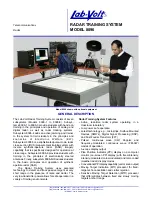
Eight planets
orbit the Sun. Each planet is moving on its own
elliptical
(nearly
circular) path around the Sun. Each planet is a different distance from the Sun
and orbits at a different
speed
— the closer to
the Sun
, the faster the planet orbits!
The planets all have different sizes, masses, and compositions.
There are those with a solid surface like Earth and Mars and others consist almost
entirely of gases, like Jupiter and Saturn.
NEPTUNE
Distance from Sun:
4.5 billion km
Diameter: 49,000 km
Mass: 17 Earths
Orbital speed: 5.4 km/s
Orbital period: 165 Earth years
Number of moons: 14
Composition: Gases and ice
URANUS
Distance from Sun:
2.9 billion km
Diameter: 51,000 km
Mass: 15 Earths
Orbital speed: 6.8 km/s
Orbital period: 84 Earth years
Number of moons: 27
Composition: Gases and ice
JUPITER
Distance from Sun:
780 million km
Diameter: 142,000 km
Mass: 318 Earths
Orbital speed: 13.1 km/s
Orbital period: 12 Earth years
Number of moons: 79
Composition: Mostly gases
SATURN
Distance from Sun:
1.4 billion km
Diameter: 121,000 km
Mass: 95 Earths
Orbital speed: 9.7 km/s
Orbital period: 29 Earth years
Number of moons: 82
Composition: Gases and ice
EARTH
Distance from Sun:
150 million km
Diameter: 12,800 km
Mass: 5.97 x 10
24
kg (= 1 Earth)
Orbital speed: 29.8 km/s
Orbital period: 365 Earth days
Number of moons: 1
Composition: Rocky with liquid
water and thick atmosphere
MARS
Distance from Sun:
230 million km
Diameter: 6,800 km
Mass: 0.1 Earths
Orbital speed: 24.0 km/s
Orbital period: 687 Earth days
Number of moons: 2
Composition: Rocky with thin
atmosphere
MERCURY
Distance from Sun: 60 million km
Diameter: 4,900 km
Mass: 0.06 Earths
Orbital speed: 47.4 km/s
Orbital period: 88 Earth days
Number of moons: 0
Composition: Rocky with dense
metallic molten core
VENUS
Distance from Sun:
110 million km
Diameter: 12,100 km
Mass: 0.8 Earths
Orbital speed: 35.0 km/s
Orbital period: 225 Earth days
Number of moons: 0
Composition: Rocky with dense
atmosphere
SUN
Diameter: 1.4 million km
Mass: 333,000 Earths
Composition: Hydrogen fusing
into helium
Relative rates of rotation of
the disks in the Sun model
T
H
E
ge
a
r
b
o
x
Your solar system model only has one motor. So how does it
make the planet models revolve at four different speeds?
The answer to this lies in the gear train (also known as a
transmission) inside the model. It is made of many gears with
different numbers of teeth. When one gear is turning another gear,
the smaller gear with fewer teeth turns faster than the larger gear with
more teeth. The ratio between the speeds of two gears in a transmission
is called the gear ratio. When you put multiple layers of gears together,
as in this model, you can make each layer progressively slower.
For every 7 rotations of the
dial the following ring turns ...
... 3.5 times.
... 2.3 times.
... 1.6 times.
... 1 time.
?
!
CHECK IT OUT


























